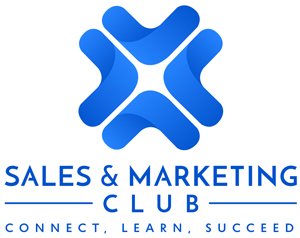1. Understanding the Dynamics of Complex Sales
1.1. The Role of Multiple Stakeholders
In complex sales, you’re often dealing with multiple stakeholders, each with their own priorities and concerns. Understanding the dynamics of these groups is crucial for navigating the sales process effectively.
- Identifying Key Stakeholders: The first step is identifying who the key stakeholders are. This usually includes decision-makers, influencers, and gatekeepers. Decision-makers hold the final authority, while influencers can sway their opinions. Gatekeepers, often in procurement or legal, control access to decision-makers and must be managed carefully.
- Understanding Individual Motivations: Once stakeholders are identified, the next step is to understand their individual motivations. For example, a CFO might be focused on cost savings, while a department head might prioritize functionality or ease of use. By tailoring your message to each stakeholder’s priorities, you can address their specific concerns and make your proposal more compelling.
- Navigating Internal Politics: Internal politics can play a significant role in complex sales. Understanding the relationships between stakeholders can help you anticipate objections or identify allies within the organization. This knowledge allows you to position your solution in a way that aligns with the internal dynamics, increasing your chances of success.
2. The Psychology Behind Decision-Making in Sales
2.1. Understanding Cognitive Biases
Cognitive biases are mental shortcuts that can influence decision-making. In sales, understanding these biases can help you craft a more persuasive pitch.
- Anchoring Bias: This bias occurs when individuals rely too heavily on the first piece of information they receive (the “anchor”). In sales, you can use anchoring to your advantage by presenting a higher initial offer, which makes subsequent offers seem more reasonable by comparison.
- Confirmation Bias: People tend to favor information that confirms their existing beliefs. By understanding your prospect’s preconceptions, you can tailor your pitch to reinforce these beliefs, making your solution more appealing.
- Loss Aversion: Loss aversion is the tendency to prefer avoiding losses over acquiring gains. You can leverage this by emphasizing what the prospect stands to lose if they don’t choose your solution, rather than just focusing on potential benefits.
- Social Proof: Social proof is the idea that people are influenced by the actions of others. Highlighting testimonials, case studies, and endorsements from well-known companies can sway prospects who are on the fence.
3. Tailoring Your Approach for Long Sales Cycles
3.1. Building and Maintaining Momentum
Long sales cycles require a different approach than shorter ones. Keeping the momentum going is essential to prevent the deal from stalling.
- Regular Communication: One of the keys to maintaining momentum is regular communication. This doesn’t mean bombarding the prospect with calls and emails, but rather providing consistent value throughout the sales cycle. This could be in the form of relevant industry news, case studies, or even invitations to webinars or events.
- Setting Micro-Deadlines: Breaking the sales process into smaller, manageable steps with deadlines can help keep things moving forward. For example, setting a deadline for a product demo or a follow-up meeting creates a sense of urgency and keeps the prospect engaged.
- Identifying and Overcoming Roadblocks: In long sales cycles, roadblocks are inevitable. These could be internal delays, budget reviews, or changing priorities within the prospect’s organization. By proactively identifying potential roadblocks and having a plan to address them, you can keep the deal on track.
- Continual Value Addition: Throughout the long sales cycle, continue to add value by providing insights, offering free trials, or involving your technical team for more in-depth discussions. This reinforces the importance of your solution and keeps the prospect’s interest alive.
4. Leveraging Data for Informed Decision-Making
4.1. Utilizing Data Analytics in Sales
Data analytics plays a crucial role in modern sales strategies. It helps in making informed decisions, predicting outcomes, and optimizing the sales process.
- Identifying High-Potential Leads: Data analytics can help you identify which leads are most likely to convert. By analyzing factors such as past interactions, demographic information, and behavioral data, you can prioritize your efforts on high-potential prospects, thereby increasing your efficiency and closing rate.
- Optimizing the Sales Funnel: Analytics can provide insights into where prospects drop off in the sales funnel. By understanding these pain points, you can make targeted improvements to your sales process. For example, if data shows that many prospects disengage after the initial demo, you might need to refine your demo content or follow-up strategy.
- Personalizing Sales Pitches: Data allows for greater personalization in your sales approach. By understanding a prospect’s past behaviors, preferences, and needs, you can tailor your pitch to address their specific concerns. This not only makes your pitch more relevant but also increases the likelihood of closing the sale.
- Predicting Sales Outcomes: Predictive analytics can forecast sales outcomes based on historical data. This helps in setting realistic targets, managing expectations, and planning resources effectively. For example, if predictive models suggest a high probability of closing a deal, you might allocate more resources to ensure it goes through.
5. Mastering the Art of Negotiation
5.1. Understanding the Prospect’s Needs and Limits
Negotiation is a critical skill in sales, especially in complex deals where the stakes are high. Understanding the prospect’s needs and limits can greatly enhance your negotiating position.
- Conducting Pre-Negotiation Research: Before entering negotiations, gather as much information as possible about the prospect’s business, challenges, and objectives. This knowledge allows you to tailor your proposal to meet their needs while also anticipating potential objections.
- Identifying Non-Negotiables: Every negotiation has certain non-negotiables—elements that the prospect cannot or will not compromise on. Identifying these early on helps you avoid impasses and focus on areas where there is room for compromise.
- Exploring Win-Win Scenarios: The best negotiations result in a win-win outcome, where both parties feel they have gained something of value. To achieve this, look for ways to align your offering with the prospect’s goals. For example, if budget is a concern, you might offer extended payment terms or a phased implementation to ease financial pressure.
- Maintaining Flexibility: Flexibility is key in negotiations. While it’s important to have a clear understanding of your bottom line, being willing to adjust your offer can often lead to a more favorable outcome. However, any concessions should be carefully considered and should not undermine the value of your offering.
6. Active Listening and Emotional Intelligence in Sales
6.1. The Power of Active Listening
Active listening is a powerful tool in sales, particularly in complex situations where understanding the prospect’s needs is crucial.
- Building Rapport: Active listening helps build rapport with the prospect. By fully engaging in the conversation and responding thoughtfully, you demonstrate that you value their input. This fosters trust and makes the prospect more likely to share their true concerns and needs.
- Uncovering Hidden Needs: Often, prospects may not fully articulate their needs or concerns. Through active listening, you can pick up on cues—such as tone of voice or hesitations—that might indicate underlying issues. By probing further, you can uncover these hidden needs and address them in your proposal.
- Enhancing Problem-Solving: When you actively listen, you’re better equipped to understand the prospect’s challenges and offer solutions that are tailored to their specific situation. This not only makes your pitch more relevant but also positions you as a partner rather than just a vendor.
- Strengthening Negotiation Positions: Active listening is also crucial during negotiations. By carefully listening to the prospect’s objections and needs, you can craft responses that are more likely to lead to a mutually beneficial agreement. It also helps in identifying areas where the prospect might be willing to compromise.
7. Building Long-Term Relationships Post-Sale
7.1. Transitioning from Closing to Relationship Management
Closing a sale is just the beginning of the customer relationship. Effective relationship management can lead to repeat business and referrals, which are vital for long-term success.
- Smooth Onboarding Process: The onboarding process is critical in setting the tone for the relationship. A smooth and efficient onboarding experience reassures the client that they’ve made the right choice, reducing the likelihood of buyer’s remorse. It’s important to guide the client through the initial setup, provide necessary training, and ensure they have all the resources they need to start using your product or service effectively.
- Ongoing Communication: After the sale, maintain regular communication with the client. This could be in the form of check-in calls, newsletters, or personalized emails that provide value. The goal is to keep the relationship strong and address any issues before they escalate. Regular touchpoints also allow you to stay informed about the client’s evolving needs and offer additional solutions when appropriate.
- Delivering Value Continuously: To build a lasting relationship, continue to add value beyond the initial sale. This could be through exclusive offers, invitations to events, or insights into industry trends. By consistently delivering value, you reinforce the client’s decision to work with you and increase the likelihood of repeat business.
- Client Feedback Loop: Establish a feedback loop where clients can share their experiences and suggestions. This not only helps in improving your product or service but also shows the client that you’re committed to their success.
8. Utilizing Technology to Aid Complex Sales
8.1. CRM Tools for Managing Relationships
Customer Relationship Management (CRM) tools are essential in managing complex sales. They help in organizing data, tracking interactions, and automating follow-ups, ensuring that no detail is overlooked.
- Centralized Data Management: A CRM system allows you to centralize all customer data in one place. This includes contact information, communication history, and notes from previous interactions. Having all this information at your fingertips ensures that you can personalize your approach and provide a seamless experience for the prospect.
- Automating Follow-Ups: One of the key benefits of CRM tools is the ability to automate follow-ups. You can set reminders or trigger automated emails based on certain actions or timelines. This ensures that you stay top-of-mind with the prospect and maintain momentum in the sales process.
- Tracking Sales Pipeline: CRM tools provide a clear view of your sales pipeline, allowing you to track the progress of each deal. This visibility helps in identifying where prospects are in the sales cycle and what actions need to be taken to move them closer to closing.
- Collaboration Across Teams: In complex sales, collaboration across different teams is often necessary. CRM tools facilitate this by providing a shared platform where team members can access the latest information, assign tasks, and update the status of deals. This ensures that everyone is on the same page and working towards the same goal.
9. Handling Objections with Proactive Strategies
9.1. Anticipating and Addressing Objections
Handling objections is a crucial part of the sales process, especially in complex sales. By anticipating objections and addressing them proactively, you can build trust and move the sale forward.
- Common Objections: Some common objections in complex sales include budget constraints, concerns about ROI, and skepticism about the effectiveness of the solution. By preparing responses to these objections in advance, you can address them confidently and effectively.
- Building a Case for Value: When faced with objections, it’s important to focus on the value that your solution provides. For example, if budget is a concern, you might emphasize the long-term cost savings or the ROI that your solution offers. By framing your response in terms of value, you can help the prospect see beyond the immediate cost.
- Demonstrating Understanding: When an objection is raised, it’s important to acknowledge it and show that you understand the prospect’s concerns. This not only builds trust but also opens the door to a more productive conversation. For example, if a prospect is concerned about implementation time, you could share a case study that demonstrates how quickly and smoothly the process can be completed.
- Offering Alternatives: In some cases, offering an alternative solution can help overcome objections. For instance, if the prospect is hesitant about committing to a large purchase, you might offer a pilot program or a phased implementation. This allows the prospect to test the solution with minimal risk, making them more comfortable with the decision.
10. Crafting Compelling Proposals
10.1. Structuring a Winning Proposal
A compelling proposal is key to closing complex deals. It should not only highlight the benefits of your solution but also address the specific needs and concerns of the prospect.
- Understanding the Prospect’s Needs: Before crafting a proposal, it’s essential to thoroughly understand the prospect’s needs, challenges, and goals. This knowledge allows you to tailor your proposal so that it speaks directly to the prospect’s situation. For example, if the prospect is concerned about improving efficiency, your proposal should emphasize how your solution streamlines processes and saves time.
- Clear and Concise Content: A well-structured proposal should be clear and concise, making it easy for the prospect to understand the value of your offering. Avoid jargon and focus on the key points that matter most to the prospect. Use bullet points, headings, and visuals to break up the text and make it more digestible.
- Highlighting ROI and Value: One of the most important aspects of a proposal is demonstrating the ROI and value of your solution. Include specific metrics or case studies that show how your solution has helped other companies achieve similar goals. This helps the prospect see the tangible benefits they can expect.
- Addressing Potential Objections: Proactively addressing potential objections in your proposal can strengthen your position. For example, if you anticipate that price might be a concern, include a section that outlines the cost savings or efficiency gains that justify the investment.
- Personalization and Customization: A personalized proposal shows the prospect that you’ve put in the effort to understand their unique situation. Customize the content to reflect the prospect’s industry, company size, and specific challenges. This not only makes your proposal more relevant but also increases the likelihood of it being well-received.
11. The Importance of Follow-Ups
11.1. Strategic Follow-Up Techniques
Follow-ups are a critical part of the sales process, especially in complex deals where multiple touchpoints are required to close the sale.
- Timely Follow-Ups: The timing of your follow-ups can significantly impact the outcome of the sale. Following up too soon can come across as pushy, while waiting too long can result in the prospect losing interest. A good rule of thumb is to follow up within 24 to 48 hours after a meeting or a key interaction.
- Providing Value in Every Follow-Up: Each follow-up should provide value to the prospect. This could be in the form of additional information, a case study, or an answer to a question they had. The goal is to keep the conversation moving forward and to reinforce the benefits of your solution.
- Variety in Communication Channels: Don’t rely on just one communication channel for follow-ups. Mix it up by using a combination of emails, phone calls, and even social media messages. This keeps the communication dynamic and ensures that your messages are seen.
- Persistence Without Pressure: Persistence is key in sales, but it’s important to strike the right balance. While you want to stay top-of-mind, you don’t want to pressure the prospect. If a prospect isn’t ready to make a decision, respect their timeline and use follow-ups to build a relationship rather than push for a sale.
- Tracking Follow-Up Effectiveness: Use your CRM system to track the effectiveness of your follow-ups. This data can help you refine your approach, identifying which types of follow-ups are most successful in moving prospects closer to a decision.
12. Leveraging AI and Predictive Analytics
12.1. AI-Powered Sales Insights
Artificial Intelligence (AI) and predictive analytics are transforming the way complex sales are managed. These technologies can help identify promising leads, personalize engagement, and forecast outcomes.
- AI for Lead Scoring: AI can analyze vast amounts of data to score leads based on their likelihood to convert. This allows sales teams to focus their efforts on the most promising opportunities, improving efficiency and increasing the chances of closing deals. For example, AI can analyze a prospect’s past behavior, interactions with your website, and engagement with your content to determine their readiness to buy.
- Personalized Content Recommendations: AI can help deliver personalized content recommendations to prospects based on their behavior and preferences. For instance, if a prospect has shown interest in a particular product or service, AI can suggest relevant case studies, whitepapers, or blog posts that address their specific interests. This increases engagement and moves them closer to making a decision.
- Predictive Sales Forecasting: Predictive analytics can forecast sales outcomes based on historical data and current trends. This helps in setting realistic goals, allocating resources effectively, and anticipating challenges. For example, if predictive models suggest a high probability of closing a deal within a certain timeframe, you can plan your resources and efforts accordingly to ensure the deal is successfully closed.
- Optimizing Sales Processes: AI can also be used to optimize various sales processes, such as lead nurturing, follow-ups, and even pricing strategies. By analysing data from past sales, AI can identify patterns and suggest improvements that can lead to better outcomes.
13. Building Long-Term Client Relationships
13.1. Onboarding and Client Success
The onboarding process sets the tone for the client relationship. A smooth and effective onboarding can prevent buyer’s remorse and lay the foundation for long-term success.
- Personalized Onboarding Experience: Tailor the onboarding process to the client’s specific needs and goals. This demonstrates that you’re committed to their success and not just interested in closing the sale. A personalized onboarding experience might include customized training sessions, dedicated account managers, or even a step-by-step guide that aligns with the client’s goals.
- Regular Check-Ins: After the sale, continue to check in with the client to ensure they are satisfied with the product or service. Regular check-ins allow you to address any issues promptly, which helps in maintaining trust and satisfaction. For instance, scheduling a quarterly review meeting can provide an opportunity to discuss the client’s progress and any potential areas for improvement.
- Client Success Programs: Implement client success programs that provide ongoing support and resources. These programs can include webinars, exclusive content, or even dedicated support teams that help the client get the most out of your product or service. By continually adding value, you strengthen the client relationship and increase the likelihood of repeat business.
- Proactive Problem Solving: Be proactive in solving any issues that the client might encounter. If you identify a potential problem before the client does, address it immediately and offer a solution. This proactive approach not only prevents dissatisfaction but also demonstrates your commitment to the client’s success.
14. Analysing and Improving Sales Performance
14.1. Post-Sale Analysis
Analysing the sales process after closing a deal can provide valuable insights into what worked well and what could be improved. This continuous improvement is essential for success in complex sales.
- Reviewing the Sales Process: Conduct a thorough review of the sales process once a deal is closed. Identify key moments that contributed to the success of the deal, as well as any challenges that were encountered. This analysis can help you refine your approach for future deals. For example, if a particular negotiation tactic was effective, you might consider using it in future sales.
- Client Feedback: Gather feedback from the client about their experience during the sales process. This feedback can provide insights into areas where you can improve, such as communication, responsiveness, or the clarity of your proposal. Use this feedback to make necessary adjustments to your sales strategy.
- Identifying Training Needs: Post-sale analysis can also help identify areas where your sales team might need additional training or resources. For instance, if the analysis reveals that objections related to pricing were difficult to handle, you might consider providing additional training on pricing strategies.
- Continuous Improvement: Use the insights gained from post-sale analysis to continuously improve your sales process. This might involve refining your pitch, enhancing your CRM system, or adjusting your follow-up strategy. The goal is to make your sales process more efficient and effective with each deal.
- Setting New Goals: Based on the analysis, set new goals and benchmarks for future sales. These goals should be realistic and aligned with the insights gained from the analysis. For example, if the analysis shows that deals with a certain type of client are more likely to close, you might set a goal to focus more on that segment in the future.


















